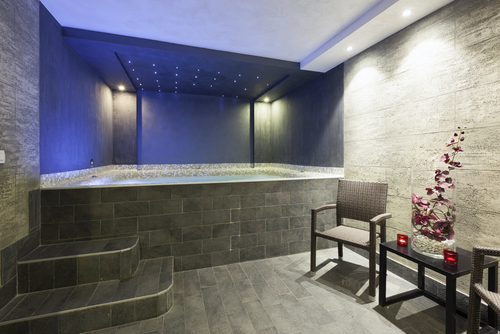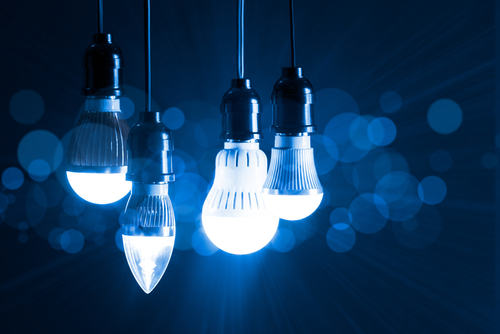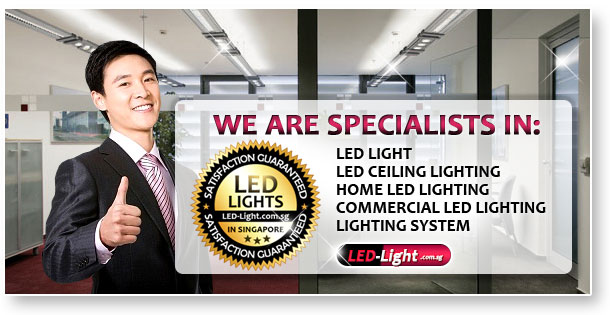 |
Best LED Lighting Colour To Choose For
2015 |
LED bulbs economic use light-emitting diodes instead of
filaments and rare gases used bulbs. LED lighting dates from
the 60's, when LED indicators progressively took place on
electronic devices. The reason was to low power consumption
and high life (basically LEDs should not be replaced for
dozens of years).
For many years, LEDs were only available in the colours
yellow, orange, infra-red, red and green. In the 90's were
discovered LEDs blue, cyan and purple. By using LED bulbs
for lighting homes have passed several years, during which
it was discovered white LED.
LED white LED light bulbs used in current was discovered in
1993 by Nichia Corporation. Practically invented blue LED,
whose light combined with green and red LEDs produce white
light using techniques such as wavelength conversion, colour
combination or Homoepitaxial ZnSe.

Best colour of LED lighting bulbs is certainly warm light
(yellow), however this could differ based on the place where
they are set.
Advantages of LED light bulbs
There are some undeniable advantages and unique
characteristics of LEDs and LED lighting that make them
attractive for your applications:
Efficiency
LED light generated by using electricity more efficiently
than with incandescent, where almost 90% of the energy is
used to heat the filament to incandescence. In addition, the
optical system used is superior in terms of losses. Power
supply efficiency is another important factor. However,
taken together, lead to a much higher efficiency compared to
conventional solutions. This will be reflected in
electricity consumption. Energy savings frequently exceeding
50% compared to traditional sources.
When it comes to Best LED Lighting Colour To Choose For
2015, it's also worthy to be noted that warm white creates a
pleasant ambiance regardless of the room and it is also very
efficient energetically speaking.
Lifetime
Lifetime of LED (35000-100000 hours) is a measure of the
degradation level of light. LED lifespan substantially
exceeds that of incandescent light sources (1000-2000 hours)
or fluorescent (8000-15000 hours). Furthermore LED lighting
sources are more resistant to temperature variations,
vibration and mechanical shock, as they are more reliable
than traditional ones.
colour
LEDs do not require filters to produce light of a particular
colour. The colour is generated by the semiconductor
material.
Directional emission of light
Light is directed where it is needed. Traditional lighting
sources emit light in all directions. For many applications
a great deal of light is wasted unless using special
reflectors or optical devices. LEDs are mounted on a flat
surface thereby reducing light emitting hemispherical not
used.
LEDs of white colour have been proven to have a very long
time, but then again light bulbs of other colours can also
last quite a lot. Generally speaking, you shouldn't replace
such light bulb within years.
Size
LED lighting sources can be very compact; small size and
directional light enables innovative solutions with a
compact design. In order to produce a light output
equivalent to that produced by conventional lighting bodies
is necessary to group several LEDs. Even lamps that produce
hundreds of lumens are more compact than gas discharge
similar flow.
In parking lots / garages and other ceiling back down can be
successfully exploited feature LED lamps to be compact. So
for windows or containers may be used without detracting LED
lamps.

Resistance to shock and vibration
When subjected to shock and vibration are not deteriorate
filament or glass flask as in other types of lamps. Classic
lamps and incandescent gas discharge may be affected when
operating in environments that are subject to excessive
vibration. In applications related to transportation (plane,
train, bus, car) lighting in and around industrial,
elevators, escalators, fans, LED luminaries are the perfect
choice.
Traditional light sources included in or quartz glass
balloons which can be damaged during transportation,
storage, handling and installation. LED devices also may
suffer damage soldering on the board, but not to a greater
extent than other electronic devices, which is why
luminaries with LEDs are useful for applications such as
sports, kids room, food preparation areas where there is
danger of breaking.
Operation at low temperature
LED lamps improves performance at low temperatures.
Fluorescent lamps, especially those based on amalgam,
malfunctioning at low temperatures, high voltages are
required to ignite and having a lower lumen. For this reason
LED lamps are useful for applications in refrigerated rooms,
freezers, cold rooms, outdoor applications.
Instant Ignition
No need for heating. Fluorescent lamps, in particular those
based on the mixture need to three minutes to reach the
maximum emission of light. High Intensity Discharge lamps
are heating times from a few minutes up to 10 minutes metal
halide lamps with sodium. They need the extra time (10-20
minutes) from the time of settlement to be restarted, time
can be reduced to 2-8 minutes when using pulse-start
ballasts. LEDs reach full brightness instantly and can
rekindle immediately after being turned off.
Recent studies have proven that white (and yellow) LED
lights ignite faster than others (or so are perceived by the
human eye), hence another reason to deem this colour as the
best of 2015 for LEDs.
Ability to withstand numerous off-cycles
Traditional lamps burn out quickly if subjected to frequent
off-cycles whereas if thinned filaments in incandescent
lamps burn ignition operation, and in the case of
fluorescent and gas discharge start voltage of the coil
coating erodes electrode. Shelf life of the LED and its
luminous flux is not affected by rapid cycles. This feature
makes LED lamps suitable for applications with presence
sensors and signals.
This property is available for LED lights regardless of
their colour.
Controllability
LED lamps are compatible with electronic control devices for
adjusting the level of light and colour characteristics.
Efficient lighting sources have limitations on traditional
control light levels. Dimming systems can be achieved only
with a commercial fluorescent substantial premium. LEDs
offer potential benefits in terms of level control light and
colour. As technology evolves dimming and control the colour
are areas of innovation in lighting. Integration with
photoelectric cells offer the potential for energy
efficiency.
No Infrared or ultraviolet emission
Lighting LEDs do not emit infrared or ultraviolet.
Incandescent lamps convert most of the energy in infrared
radiation, only less than 10% is converted into visible
light. Fluorescent lamps convert about 20% of the energy in
light and ultraviolet radiation emitting economic
necessitating suitable protective devices to not affect the
occupants of the room. Infrared radiation can cause burns,
and the ultraviolet damage works of art, artefacts, fabrics
and eyes.
All LED Lights are quite harmless for the eye, with warm
white mimicking the colour of the sun and being a great
addition to any home. It is certainly a suitable colour for
2015.
Reduced environmental impact
LEDs conserve energy and do not contain environmentally
hazardous substances unlike sources of gas discharge
lighting containing mercury. Much longer life makes LED
lighting sources to be more attractive in terms of
environmental protection.
The global trend is to abandon the traditional light
sources, energy inefficient light sources and promoting
performance category which includes LEDs. Warm white can be
deemed as the colour of choice for LED lights in 2015.
Please enter your contact information to receive a LED
lighting solution that meets your needs best up to one week
will contact a specialist in the lighting and find the best
solution for you. If you live in Singapore, then we are the
LED company which you can count on! |
|
|
|
|
|
|
|
|
|
 |
 Looking for Interior Design LED Lighting?
Looking for Interior Design LED Lighting?
Want that LED Ceiling Light in your Home?
Love your Neighbour's New Condo LED Lighting?
Searching For the Leading LED Lighting Specialists?
|
|
I was renovating my home and
i was introduced to install my LED lighting from
LED Light Singapore. I am very impressed with
the way they handled their customer. The LED
lights were installed and working properly. All
i can say is they are a very reliable and
efficient lighting company. |
| Eileen (Balestier) |
|
|
|
|
|
#1 LED Lighting Specialists in
Singapore |
|
| |
|
|
|
|
I was introduced to LED Lighting Singapore by my
mother in law. The sales man Derrick came down
and advice us on the lighting placement and also
what type of LED light is suitable for my condo.
They supply and installed my LED lighting and i
am very happpy with their workmanship and after
ales service. Impressive. |
|
Laurence Chen (Bishan) |
|
|
|
Your One Stop Solution For Home &
Office on All Types of LED Lighting in Singapore |
|

We are specialists in LED Light, LED Ceiling Lighting, Home
LED Lighting, Commercial LED Lighting, Lighting System |
|
|
|
|
|
|
|
|
|
|